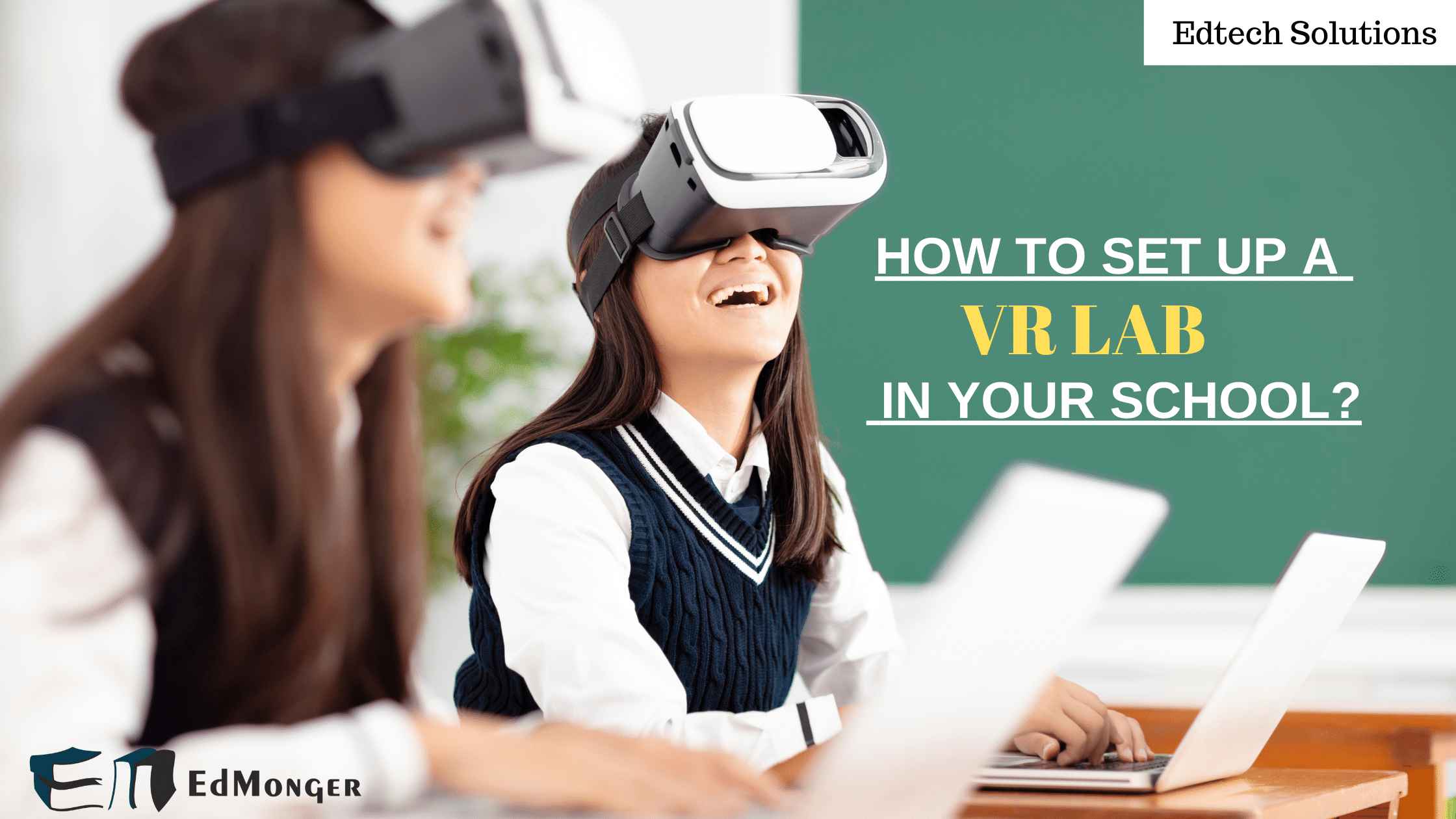Do we need a VR lab in schools?
Initially, many people thought the game business would benefit significantly from the introduction of augmented and virtual reality technology. Furthermore, the audience previously believed AR and VR solely apply to gaming.
Nevertheless, as time passed and the foundations of the technological revolution grew stronger in India, the technology behind augmented and virtual reality began to be applied in various sectors.
Experiments were going on in the edtech industry on AR & VR, and the Pandemic knocked. And then, there was the rise of AR & VR in the education sector. And such a boom was not seen anywhere. Perhaps it was a boon for the education industry that today with the advent of advanced technology in AR and VR, students can understand even the most difficult subjects very quickly.
But now the question arises will every school/college apply AR and VR technology flawlessly?
The answer is yes.
VR Lab has made all this possible. In this blog, we will discuss what virtual reality labs are and how you can set up one in your school/college.
Here we go..!!
Discussion point: Do AR and VR help to enhance a child’s skills?
What Is a VR Lab?
These are the labs opened to enhance the quality of education. It offers the practicality of subjects so that students can conduct experiments and get a deeper understanding of the concepts that are challenging to understand. By simulating real-world conditions, virtual reality labs enable the students to learn the concepts in a practical, fun, and interactive space.
Virtual reality labs offer a variety of hypothetical scenarios, which helps the students to grasp the theory behind every concept. Along with this, it also assists the students in learning high-tech tools that are not usually offered in traditional classrooms.
Related: A Complete guide get started with Ar and VR in your classroom
How To Use Virtual Reality (VR) Labs In Schools And Colleges?
Virtual reality labs have allowed students to quickly and easily grasp concepts that previously required extensive theoretical study. Since Virtual Reality (VR) Labs have become commonplace in universities, new applications have emerged. Let’s know how it can be done in VR Labs in Schools and Colleges.
1. To smoothly Explain Complex Topics.
Some subjects are too complicated for theory to explain adequately, just like most sections of Molecular Studies or Biology, which call for extensive reading and research. They used to be able to be defined using visuals, but not all students have the same intellect, so not all students can effectively learn through visuals. The entire human body may be seen in 3D with modern Virtual Reality Labs. Students can now visually grasp the processes involved in the sophisticated chemical theory of addition and subtraction.
2. To Teach Biology In an Effective And Productive Way
Virtual reality laboratories can improve education significantly, especially in teaching and learning specific subjects like biology. Dissection was once the go-to method for elucidating the inner workings of animals, but the rise of animal rights activism meant that this practice was eventually phased out.
Thanks to VR labs, researchers may study animals without ever having to handle them physically. Like medical students, forensic medicine students are not required to visit postmortem labs to learn about the human body. VR technology has made it possible to teach students about every organ in the human body without ever leaving the classroom.
Must Read: How experiential learning will have more impact if combined with VR?
3. VR Labs Facilitates Distance Education
Due to the Pandemic, you must have seen that students were doing online studies from home, so it took a bit of work to understand any concept practically, but with the help of VR Labs, it has been possible. Now, if a student wants to do online learning from home, no matter where he is in the world, he can understand his concepts practically with the help of VR Labs.
What equipment will be required to set up a Virtual Reality Lab in Classroom?
Here is the list of the equipment required to set up a Virtual reality lab in the classroom.
- Machines that monitor and record motion.
- Rendering computers are used for.
- Mobile computing devices can be carried on a person’s back.
- Hardware is used to input data.
- Tools for observing live experiments, such as projectors or large screens.
- Body-part-specific gloves and screens.
- Amplification and speaker systems
- Instrumentation for monitoring vital signs
- Sensing devices that monitor eye movement.
How To Set Up a Virtual Reality Lab in the Classroom?
While setting up a VR lab is relatively easy, several requirements must be met, and considerations must be made before you can get started. Let’s check them out.
1. Primary Considerations To Set a VR Lab in Classroom
● Budget
First, you must look into the budget required for setting up the VR system or software needed in your classroom.
● Flexibility and Scalability
As your classroom grows or new technology comes, you will have to adapt accordingly, so whatever VR technology you use should be such that you can easily upgrade it over time.
● Area
The area required for installation and storage must be permanently devoted to your virtual reality setup.
● VR Quality/ Responsiveness
VR systems should be equipped with high-quality visuals and refresh rates and respond quickly to users’ movements.
2. The Software Requirements
- The software built into each VR system is the fundamental component of these devices. Because, in the end, it is the software that will assist in displaying various graphics. The user will have a better overall experience with the software depending on how adaptable it is, how frequently it is updated, and how quickly it operates. Let’s talk about the crucial points to keep in mind.
- The software or VR system should be accessible and straightforward, especially for those without programming experience.
- The software is composed of virtual solid reality community code libraries that help speed up the creation of virtual worlds.
- If it is going to be used in industrial applications, then the VR system should be equipped with improved “rapid application development” to streamline the creation of virtual reality environments.
- VR systems should support hardware configurations as well. You must check its compatibility with several VR input and output technologies like desktop walkthrough, CAVE, and VR headsets.
Related: Useful VR apps for your classroom.
3. Physical Space Configuration
- Is the space available with you compatible with 3D projections? Do you have a room where students or researchers can quickly move around by wearing VR headsets?
- Check out the potential obstacles (infrared lights, sensitivity for motion tracking, line of sight occlusion, etc.) a student could face while trying to achieve perfect motion tracking.
- Can we maintain a clutter-free zone where people wearing VR headsets can move about without interference?
- Will networking be required for your simulation to facilitate connections between local and remote participants?
- You should check the room in which you will set up the VR lab and whether some factors will affect the studies or the outcome.
Key Takeaways
Since new technologies emerge every day, educators must improve their skills constantly. Virtual reality (VR) in the classroom is an incredible idea, and setting up VR lab at the school/college may seem very tough to everyone today. But if you take time and consider all the factors involved, you can make it work.
Most challenges are generally manageable if you follow the instructions carefully. We have detailed in this blog post what is needed for this, how virtual reality laboratories can be established in the classroom, and why this is the future wave.
You’ve probably learned quite a bit from this blog, and we hope that continues to be the case. You can ask us anything in the comments if you have more questions or concerns; we’re happy to assist you.




